 |
Juniper
These bluish purple berries are the basis and therefore the signature of all gins, and the prominent flavour in traditional gins. Although it has a berry-like appearance due to its fleshy skin, the juniper berry is not actually a true berry but a female seed cone from a conifer. Juniper berries have a strong and assertive pine flavour; although the flavour is mostly woody it can have some slightly citrus and floral tones to it.
|
 |
Coriander
Coriander is the second most common ingredient in gin. Although all parts of the plant are edible; the fruit or dry coriander seeds only a few millimetres in size are the part we use as a spice to flavour gin. When distilled the seeds have a warm, spicy, nutty flavour that can also combine citrus and orange notes.
|
 |
Orris Root
The orris root is the rhizome (mass of roots) of the iris flower. Once important in herbal medicine, orris root is more commonly used in the manufacture of perfumes for its scent which is reminiscent of violets. It has a heavy flowery and woody flavour that helps bind the other components in the gin together.
|
 |
Angelica Root
Angelica, also known as Holy Ghost or Wild Celery, grows in many countries of the Northern Hemisphere and is often found near rivers and lakes in damp soil. Cultivated in the 10th century as a medicinal plant, angelica’s sweetly scented edible roots add a nicely balanced earthy and floral combination to Gin.
|
 |
Cassia Bark
Considered one of the 50 fundamental herbs in Chinese medicine Cassia is often used as an alternative to cinnamon, which is in the same family and genus. This often leads to confusion between the two botanicals in both taste and texture. Cassia bark adds a strong cinnamon style flavour with an extra peppery punch
|
 |
Liquorice
Altough thought similar in taste to star anise and fennel, the liquorice plant is unrelated as it is actually a legume associated to the family of beans and peas. The name liquorice was derived from the Greek word meaning sweet root, descriptive of its long lasting, mellow, sweet, woody flavour.
|
 |
Cubebs
Cubebs or tailed peppers are the berry looking fruits of the piper plant, which are collected before they are ripe and then dried. They are highly flavoursome, giving a persistent bitterness and often are compared to the tastes of pepper and allspice.
|
|
| |
|
Floral Botanicals
|
 |
Hops
Unlike the bitterness imparted in beer production, aromatic hops when distilled for gin have a pleasant, sweet flavour, which lingers in your mouth.
|
|

|
Lavender
Lavender varieties were selected for their exquisite floral notes that create a heavenly smooth and creamy feeling in the mouth as well as a fantastic aroma.
|
|

|
Elderflower
The elderflower is from the flowering elderberry plant (Sambucas) and, though often thought of as quintessentially English, is wide spread in the Northern Hemisphere. It is used in cooking and to produce soft drinks such as elderflower cordial, as well as being added to alcoholic drinks such as Sambuca. Elderflower adds delicately sweet floral notes to gin.
|
|

|
Rose Hips
Rose hips are the fruit of the rose plant and form after successful pollination of the flowers. They have many uses in food, for ornamental value and in medicines due to their high vitamin C content. They have a delightfully light, sweet flavour.
|
|

|
Camomile
Camomile has many common uses including in herbal tea to aid sleep, as an anti-inflammatory in cosmetics and to aid the enhancement of blonde hair. It has a mild, clean, floral flavour with subtle fruity hints.
|
|
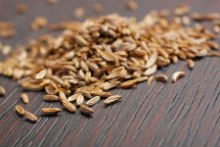
|
Caraway
Caraway seeds have a warm, sweet, and slightly peppery aroma when squeezed between index and thumb fingers. Its seeds are used extensively in European and Mediterranean cooking.
|
|

|
Samphire
Samphire has a salty taste, as you might expect from a plant grown in salt marshes, although once distilled it has a rather pleasant sweetness about it with fresh grassy notes.
|
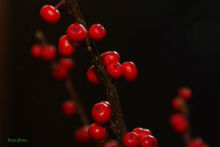 |
Rowan Berry
Many mistakenly believe that Rowan Berries are poisinous, fortunately they are not. They had a slightly bitter taste but when distilled add a sharp edge to bring a little bite to your gin.
|
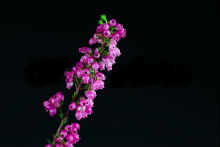 |
Heather
A gentle floral flavour that works well in Gin. Often used in conjunction with other floral flavours.
|
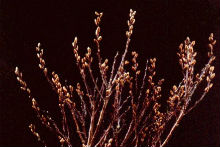 |
Bog Myrtle
Before the introduction of hops to Great Britain, and possibly as early as the 11th century, bog myrtle was one of the chief components of a herbal cocktail known as “gruit”, used to flavour and add bitterness to ale.
|
Citrus Spectrum
|
|

|
Lemon
Most people are familiar with the bright yellow fruit that grows on evergreen trees native to Asia. It has a distinctive sour taste and in gin provides extra delicate citrus notes and helps to add a zingy attitude to the other botanicals.
|
|

|
Bitter Orange
Bitter oranges, also known Seville oranges, are used in the production of marmalade as well as in herbal medicines and as appetite suppressants. Bitter oranges have an amazingly distinctive combination of sweet, sour and bitter flavour that a normal orange lacks and they blend in astonishingly well with the other citrus notes.
|
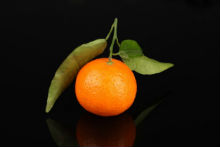 |
Tangerine
Distintly different than Orange, Tangerine provides a warmer citrus that can be less distruptive when combined with herb botanicals.
|
|

|
Kaffir Lime Leaves
Native to South East Asia, kaffir lime leaves are utilised as an Indonesian insecticidal medicine and are also frequently used in Thai cuisine to add a zesty, aromatic yet astringent flavour. The Kaffir lime leaves mix well with the lemon and bitter orange to give an all round full bodied fruity citrusy flavour.
|
Spice Botanicals
|
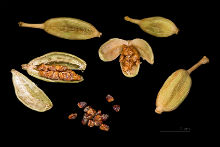 |
Cardamom Seeds
Almost menthol-like, cardamom gives a warming aromatic citric-floral note. Often combinded with Tangerine to give a taste of Christmas.
|
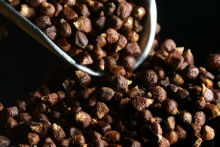 |
Grains of Paradise
Aromotically they help to boost the corianders citric and spice elements. They have the warmth of cardamom and also a hint of lavendar to compliment the juniper.
|
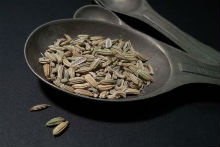 |
Fennel Seed
Similar to aniseed but with more of a lemon top note.
|
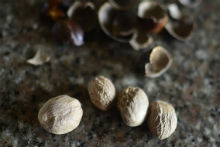 |
Nutmeg
An immediately identifiable warm spice, smooth with heat.
|

























